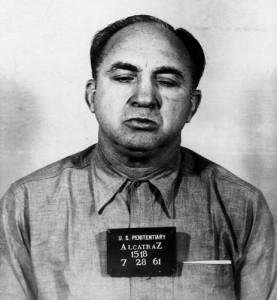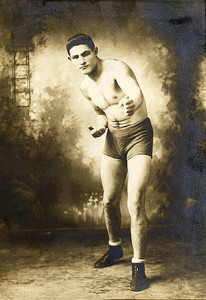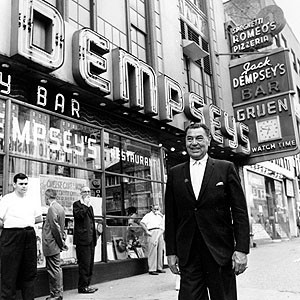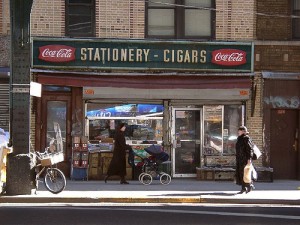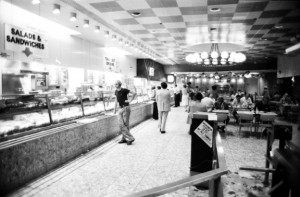On October 21, 1929 (just days before the stock market crash which ushered in The Great Depression) there was a sell out crowd at New York’s Madison Square Garden watching five 5-round boxing matches. In each bout one of the fighters was Jewish—Max “Slapsy Maxie” Rosenbloom; Yale Okun (fresh from his win over heavyweight champion to be, “Cinderella Man” James Braddock); Al Singer “The Bronx Beauty”, Ruby Goldstein “The Jewel of the Ghetto” and Jackie “Kid” Berg. The fantastic, Semitic fistic program, promoted by Samuel “Subway Sam” Rosoff, the Jewish builder of New York’s subways, was a benefit for the Palestine Emergency Fund and “The Stricken Jews of Palestine.” In six days (August. 23-29, 1929) some 132 Jews had been killed, 232 seriously injured and many left homeless by Arab rioters incensed at the Jewish presence at Jerusalem’s Western Wall and the increasing Jewish migration to Palestine. Some of the worst bloodshed was in Hebron. The 600 Jewish residents there refused help from the Haganah (then an illegal Jewish self defense group). The Jewish Hebronites said they would be protected by the Arab elders. They were wrong. Some 68 Hebron Jews were murdered. Let’s segue to 1948. “Slapsy Maxie”(Damon Runyon had given him the nickname because, though a very clever boxer, Rosenbloom was a light puncher) was a comic actor in the movies (usually playing a punchy lug). He fronted a comedy club in Hollywood, “Slapsy Maxie’s.” His boxing career was long over (Four years as light-heavweight champ, 298 fights with 229 wins). LA Mobster Mickey Cohen (once a featherweight boxer himself) was with Ben “Bugsy” Siegel a founder of Murder Inc. and leader of the “Jewish Mafia” and the alleged real owner of “Slapsy Maxie’s.” It was at the club that Ben Hecht made a legendary speech to an audience of Cohen, Siegel and other Jewish gangsters, bookmakers, hustlers and gamblers. Hecht was a prominent screen writer, novelist and journalist. He was an ardent supporter of Irgun (the Israeli terrorist cell headed by Menachem Begin). Hecht asked the audience of tough guy Jews to contribute money for the purchase of arms for Irgun. Some $200,000 was raised. There is a division of opinion on what happened to the money. Some claim Cohen simply kept the dough. A writer devoted a book to an implausible theory linking Mickey Cohen, Menachem Begin, the Mossad and the Israeli government to the death of Marilyn Monroe and the assassination of President Kennedy. Obviously, there is a glut of far fetched conspiracy theories concerning these events, one more outrageous than the next.
Maxie And Mickey
May 24th, 2015 § 2 comments § permalink
Soldier VS Sailor
May 13th, 2015 § 3 comments § permalink
Okay. This is the last of HG’s ruminations about old (mainly Jewish) prize fighters. HG has been fascinated by the fighting names of two battlers (they fought as welterweights and middleweights) Soldier Bartfield and Sailor Friedman. Soldier (1892-1970) was born Jakob Bartdfeldt in Hungary. He grew up in Brooklyn and was one of the busiest (some 220 fights between 1911-1932) and toughest fighters of his era. Soldier fought the best including champions Ted “Kid” Lewis (6 times), Mickey Walker (3 times), Benny Leonard, Jack Britton (7 times), Harry Greb (3 times). Soldier beat Lewis once, Britton once and Greb once. Soldier’s nephew was the very good Brooklyn middleweight, Danny Bartfield. During a comparatively short career (1940-1948),he had a record of 41 wins and five losses. (An aside: Britton was Ernest Hemingway’s favorite fighter and is a prototype for Hemingway’s fictional portraits of fighters. Britton fought Ted ‘Kid” Lewis the great Jewish welterweight from London’s East End, some 20 times. Each was a close bout and the welterweight championship shifted between them.) Soldier got his military name from three years of US Army service in Texas (presumably chasing Pancho Villa). Sailor Friedman (1899-1968) was born William Friedman in Chicago, ran away from home at the age of 14, settled in South Philadelphia. Sailor got his nautical name from three years (1915-1918) service aboard a US Navy battleship. He moonlighted from the ship to have his first professional fight in 1916. During his career (1916-1928) he had 119 fights (winning about half). Highlights were a losing battle with Mickey Walker for the welterweight title and two losing efforts against another Philadelphia fighter, Lew Tendler. Sailor was not an exemplary citizen. His manager was Max (Boo Boo) Hoff, Philadelphia gangland boss, bootlegger, gambling house operator . Sailor worked in various Hoff gambling enterprises and was one of his bodyguards. Sailor was charged with a Chicago murder in 1922 (killing of an illicit booze transporter). Convicted but exonerated. In 1923, on the eve of a Milwaukee fight, Friedman was beaten bloody by three assailants and left senseless. Cops linked it to a Chicago gangland dispute. In 1928, Friedman was arrested for assault but released. Surprisingly, Sailor had a streak of patriotism (or a desire to leave troubling circumstances in Philadelphia). In 1942, at the age of 43, he re-enlisted in the wartime US Navy. Record books reveal another Sailor Friedman who fought in New Orleans five times. There was also a Sailor Freeman (no relation of HG) who had one fight. And, there was also an obscure Soldier Freeman (no relation). Go figure.
Fighter Eateries
May 10th, 2015 § 5 comments § permalink
Recent post on the great heavyweight champ Joe Louis and the New York night club he fronted (Park Avenue Club), has made HG recall the various bars and restaurants of HG’s youth that were named after fighters (the battlers either acted as greeters or were part owners). The most famous was Jack Dempsey’s on Broadway (between 49th and 50th). Really good food. The steaks were outstanding. The ex-heavyweight champ was always on hand, greeting customers and handing out autographed photos. It had a long run (1935-1974) and was professionally managed by co-owner Jack Amiel (He owned the next door Turf Restaurant and his horse, the longshot Count Turf, won the 1951 Kentucky Derby). You can see the restaurant in the movie, “The Godfather.” The art directors did a superb job of reproducing the facade. A bit south on Broadway (1677A Broadway) was Abe Attell’s Cafe. This was more a bar than a full fledged restaurant (had just enough food on hand to satisfy the liquor authorities). Attell, nicknamed “The Little Hebrew”, was a great fighter (featherweight champ with 102 wins to his credit) and all-around scoundrel. He was indicted for aiding Arnold Rothstein in the scandalous “Black Sox” World Series fix but was found innocent by the jury. Big feature of the bar was a colored photo of Abe and opponent Harlem Tommy Murphy–both covered in blood. Abe’s bar was favored by heavy drinking bookmakers and gamblers. Few ate there. Abe himself favored Lindy’s Restaurant a few blocks away. (Broadway gag: “The food is so bad at Attell’s the rats go next door to eat.”) Abe grew up in an Irish neighborhood in San Francisco. Being Jewish, he had to fight in the streets every day. He recalled that he had ten fights in one day. The Attells were a fighting family. Brother Monte Attell, “The Nob Hill Terror,” was world bantamweight champ. First time two brothers were world champs at the same time. The third brother, Caesar, also fought professionally. Good. Not great. He was nicknamed “Two-and-a-half” because that’s what he always tossed in the hat for charitable causes. Further north on Broadway was Benny Leonard’s Cocktail Lounge (corner of 72nd Street). The lightweight champ’s place had a very brief life. Sugar Ray’s Restaurant on Seventh Avenue in Harlem had a longer run and served good food. A.J. Liebling, the eminent journalist who often wrote about boxing, reported that the big, tender pink pork chops he devoured there were mighty tasty. Middleweight champ Sugar Ray Robinson was a man of style. His colorful Cadillac convertible was often parked in front of the restaurant and was much admired. Henry “Hurricane Hank” Armstrong, one of the greatest fighters in history (he held the featherweight, lightweight, welterweight titles at the same time) also opened a Harlem restaurant, Melody Lounge. Bright lights and jazz music weren’t for Armstrong. He closed Melody Lounge and after retiring from boxing became a Baptist minister and youth counselor. Heavweight contender Tami Mauriello had a red sauce Italian restaurant, Tami’s Corner, in the Belmont section of The Bronx. HG recalls eating some splendid sausage and pepper sandwiches there. The best of the fighter associated restaurants was Lew Tendler’s Tavern in Philadelphia. Lew was an esteemed lightweight battler (More than 170 fights with only ten losses). Lew was considered to be the best fighter never to have won a championship and Philadelphia fight enthusiasts are still angry over the injustice. Tendler’s was a raucous, raffish place filled with gamblers, entertainers, Italian and Jewish gangsters. On nights of big fights it was the traditional gathering place of sports writers, HG ate there twice when HG was in Philly aiding in sports coverage. Like Tendler, the food was Jewish: Matzo ball soup. Chopped liver. Huge, garlic smothered tenderloin steaks. Like Sammy’s Romanian in New York but more restrained when it came to chicken fat. When a fight was on TV, gamblers gathered at the bar and wagered on every round. The gambling action was so frantic the sporting guys would forget to order drinks. The bartender, Lew’s son, would turn off the TV. “No money on the bar. No TV.” The bar was soon smothered in green. The New York bar favored by fighters and managers was the Neutral Corner on Eighth Avenue. The most mannerly and quiet bar HG ever frequented.
Fight Talk
May 8th, 2015 § 1 comment § permalink
HG paid scant attention to the over-hyped Mayweather-Pacquaio fight. HG had watched Mayweather battle on TV a few times. HG, a student of “the sweet science” (That’s what A.J. Leibling, the great New Yorker writer called boxing), thinks Floyd the best boxer of the modern era. No puncher, Floyd is a beautifully conditioned athlete who defeats his opponents with fast hands, ring intelligence and flawless footwork. Brilliant, but unexciting. Pacquaio is a busy little guy who is a persistent fighter without a knockout punch. Floyd won a unanimous decision (which is what HG predicted to BSK). Dull fight. Lovers of blood and thunder were disappointed. This made HG take a trip down memory lane and remember a dinner with Joe Louis, the great ex-heavyweight champ and Billy Graham, the very slick Irish welterweight from New York’s East 30’s neighborhood. The venue was the Park Avenue Club, a New York midtown night club fronted by Louis. (Moonlighting from his job as a journalist, HG was the press agent for Louis and the club). The time was the early 1950’s. Graham and Louis ate some thick steaks accompanied by French fries. HG sipped martinis and ate corned beef hash. Graham had just retired (He lost his last fight to Chico Vejar). Graham lamented the fact he never became world champion, losing some disputed fights to Kid Gavilan. Louis and Graham agreed that mob influence played a role in denying Billy the title. Graham was a good or better boxer than Mayweather. He won 58 straight fights without a loss. He had 120 fights (102 wins, 15 losses and 9 draws). He was never knocked off his feet and he battled some bruising punchers: Joey Giardello (three fights); Kid Gavilan (three fights); Carmen Basilio (three fights). Mayweather’s 49 fights seem a paltry number when compared with the records of old time battlers. Benny Leonard (“The Pride of the Ghetto”), had 219 fights losing only 22, most in the early part of his career. Charley Goldman, who became famous as the trainer of heavyweight champ Rocky Marciano, had some 400 bouts as a bantamweight. Barney Ross, the welterweight champ, had 81 fights (72 wins; 4 losses; 3 draws; 2 no contests. Was never kayoed and was knocked off his feet only once (by Jimmy McLarnin). Ross fought three epic battles with McLarnin (Winning the first and became the first boxer to hold lightweight and welterweight titles at the same time; lost the second and won back the welterweight championship in the third). Their battles had ethnic overtones. Ross was Jewish (born Dov Ber Rosofsky) and McLarnin was Irish (much beloved by New York’s Catholic Irish despite the fact that McLarnin was a Methodist). McLarnin knocked out three great Jewish welterweights –Ruby Goldstein, Sid Terris and Benny Leonard (during an ill advised comeback by Leonard). This earned him (very political incorrect times) the nicknames: “The Jew Killer” and “The Hebrew Scourge.” Ross, a World War Two hero who killed a score of Japanese in the Battle of Guadalcanal and rescued a wounded comrade, was a very, very tough guy. His childhood pal (and partner in small time crime) was Jack Ruby, who killed Lee Harvey Oswald. Ross, who worked briefly for Al Capone, before becoming a boxer, used his mob connections to smuggle arms to Israel during the War for Independence. He was a character witness for Ruby during the latter’s trial. In his last fight, Ross lost his welterweight title to Henry Armstrong. Ross took a terrible beating. Despite efforts by the referee and his manager to stop the fight, Ross refused and said he’d lose the title but walk out of the ring on his own two feet. And, that’s what he did.
The Candy Store
August 20th, 2012 § 1 comment § permalink
New York used to be a city full of candy stores and cigar stores. The classic New York candy store carried regional NYC treats (Little Chunkies, Goldenberg’s Peanut Chews and Joyva Halvah) in addition to the national candy bar brands like Hershey, Nestle, Mars, etc.. It usually had a soda fountain dispensing egg creams, glasses of seltzer (“two cents plain”), milk shakes, “malteds” and simple sandwiches and coffee. It also sold cheap toys and some stationery items (“school supplies”). Cigarettes and cigars, naturally. There was a rack of magazines and comics and outside there was a newsstand. Well into the 50’s New York had four afternoon newspapers (Post, Sun, World-Telegram, Journal-American) and four morning papers (Times, Herald-Tribune, News, Mirror) and for a time, the super-liberal PM (later re-named The Compass). There were loads of foreign language papers: The Forward, Day, Morning Journal, Il Progreso, La Prensa, Aufbau, etc.). There were even two communist newspapers, The Worker (in English) and Freiheit (in Yiddish). After dinner, men strolled to the neighborhood candy store to get the early edition of the News and Mirror. The News was the better, sharper paper but the Mirror had the Walter Winchell column and the latest racing results (a necessity for the inveterate horse player).
The candy store was the hangout of bookmakers, gamblers and money lenders (known as “Shys”). Except in the Times Square neighborhood (where there were no candy stores), New York’s cigar stores didn’t attract quite the same sporting element. Candy stores flourished in Jewish neighborhoods. The tough Brownsville neighborhood of Brooklyn was a predominantly Jewish neighborhood. The lethal Murder, Inc. flourished there. It was typical that the Jewish contract killers (“Kid Twist”, “Pittsurgh Phil”. Albert “Tick Tock” Tennenbaum, etc.) didn’t hangout at bars. Their hangout was a candy store called Midnight Roses’s. When little HG visited his Brownsville cousins they were pointed out as neighborhood celebrities. The Brownsville prize fighters — Al Davis, Morrie Reif, Schoolboy Friedkin, etc. — had their own candy store gathering place.
The Age of the Great NY Cafeterias
March 4th, 2012 § 32 comments § permalink
Fast food franchise junk, escalating real estate prices, changing customs. These all knocked out the great New York cafeterias that fed old schmoozers, loquacious intellectuals, cab drivers, garment center workers, students, artists — everybody, in fact. In terms of cuisine, the best was Dubrow’s. There were three: one in the garment center (this was where HG dined before Knicks games at Madison Square Garden); one on Eastern Parkway in Brooklyn (where HG dined after watching Joe Klein, Floyd Paterson, Joey Giardello and other fighters at the Eastern Parkway Arena); another branch on Brooklyn’s Kings Highway (too quiet and staid for HG). All were decorated in high, post-Depression, “modernist” style with plenty of mirrored walls and pale, glistening wood. The garment center Dubrow’s (on Seventh Avenue in the 30’s) was a madhouse during weekday lunch hours. The wonder was how the cloak-and-suiters and skilled workers could eat so much and talk so much at the same time. The Eastern Parkway Dubrow’s was favored by Jewish bookmakers, horse players, gamblers, loan sharks and the last remnants of Brownsville’s Murder Inc. and associated Lepke mob. These were guys who favored expensive hats, sharp suits (by Brooklyn’s Abe Stark) and big cigars. A guy not wearing a suit, tie and hat was a “bum,” despised by all. By 1985 all the Dubrow’s were gone.
The Belmore Cafeteria on 28th Street and Park Avenue South (Fourth Avenue before the fancy name change) was a 24-hour-a-day place favored by cab drivers. Martin Scorcese’s movie “Taxi Driver” burnished its fame. The scenes between Robert DeNiro and Peter Boyle take place in front of The Belmore. Phil Siegel ran The Belmore for decades and never changed its motto: “New York’s Most Fabulous Restaurant.” Like Dubrow’s, it had plenty of Jewish and Eastern European specialties but there were many eclectic culinary surprises as well. It was always busy. At its peak, The Belmore fed some 5.000 New Yorkers every weekday. Siegel sold the cafeteria and its corner site in 1981 to developers of a “sliver” condo development.
A sad and quiet cafeteria was The Senate on Broadway and 96th. There were lots of tattoos there. No, not the multi-colored skin-scapes favored by today’s hipsters. These were the grim number tattoos of Holocaust survivors, men and women who conversed quietly over endless cups of tea. I.B. Singer, the Nobel Prize-winning Yiddish writer, was often there eating tuna salad (he also favored The Eclair,a middle European pastry shop and restaurant on W.72nd). Singer based many of his stories on the aged folks he met there — people whose stories bordered on the supernatural. There were two other groups at The Senate: junkies and hookers. The strung out junkies ate trays of the sweetest cakes they could find The hard working hookers favored more robust fare. They ate fast. Their demanding business agents didn’t like them taking too much time off.
The cafeterias of New York have vanished. Mickey Dee and the landlords have won.
